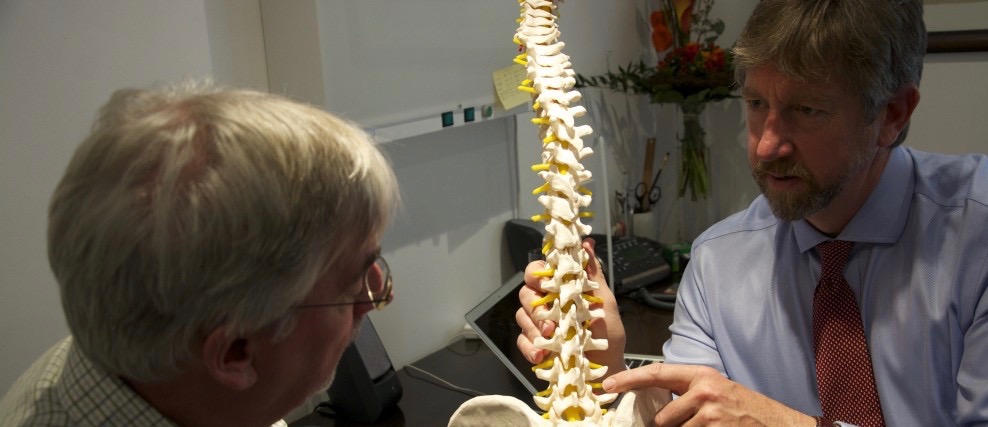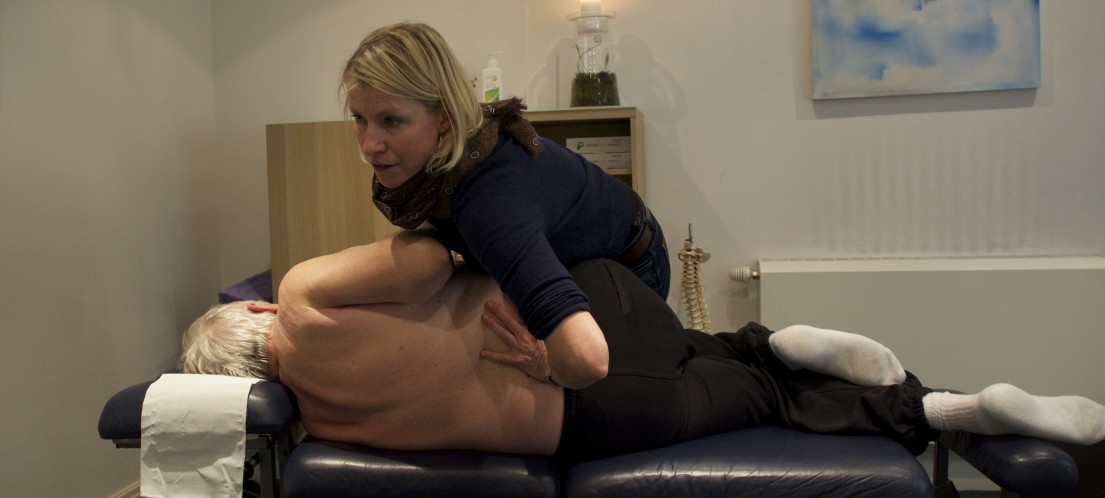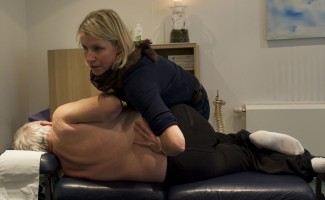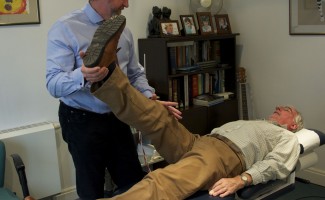Low Back Pain
Low Back Pain is the most common condition to keep people off work and can cause great pain and disability
Low Back Pain
Low Back Pain is pain arising from the Lumbar Spine, Sacrum or Pelvis which can lead to back pain and/or referred pain to the hip, groin, buttock and/or leg. We define Back Pain by the the area affected and the time suffered, however this is not a diagnosis, for that we need to understand exactly how it began, where it is, what it feels like, and what you can and cannot do. We can then test it to see how it behaves at which point we should know where, due to what, and why you are suffering.
Back Pain Diagnosis
Unfortunately only a small percentage of Back Pain can be definitively diagnosed, indeed the research suggests that 85 to 90% of back pain is ‘undiagnosable’. That seems an astonishing fact, maybe a small explanation will help.
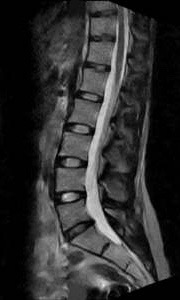 Historically back pain has been regarded as an ‘injury’ yet we know many episodes of back pain are relatively unprovoked. An injury implies a change in ‘anatomy’, like a fracture of a bone, a pulled muscle or cut in your skin, these are associated with damage, bleeding and bruising with inflammation, and are dependent on healing time to recover, a week or two for a cut, a month for a pull and about six weeks for a fracture.
Historically back pain has been regarded as an ‘injury’ yet we know many episodes of back pain are relatively unprovoked. An injury implies a change in ‘anatomy’, like a fracture of a bone, a pulled muscle or cut in your skin, these are associated with damage, bleeding and bruising with inflammation, and are dependent on healing time to recover, a week or two for a cut, a month for a pull and about six weeks for a fracture.
Diagnosis of back ‘injuries’ relies on ‘imaging’, that means X-Rays, MRI and CT Scans. We now have very advanced imaging but imaging can only show up changes in anatomy, the way it ‘looks’. However most back problems are not caused by changes in the way it ‘looks’, the anatomy, they are caused by changes in the way it works, the ‘function’. In other words a picture of the site of pain ‘looks’ the same on a scan before the pain starts, while it is suffered and after it has gone; there is nothing broken, no wound, no bruise and therefore nothing to show up on a scan.
Osteoarthritis or spondylosis are terms for ‘wear and tear’, this will show up on scans but is rarely the cause of pain, unfortunately sometimes patients are allowed to believe that such a finding is a ‘diagnosis’ for their pain, that is seldom true.
Mechanical Low Back Pain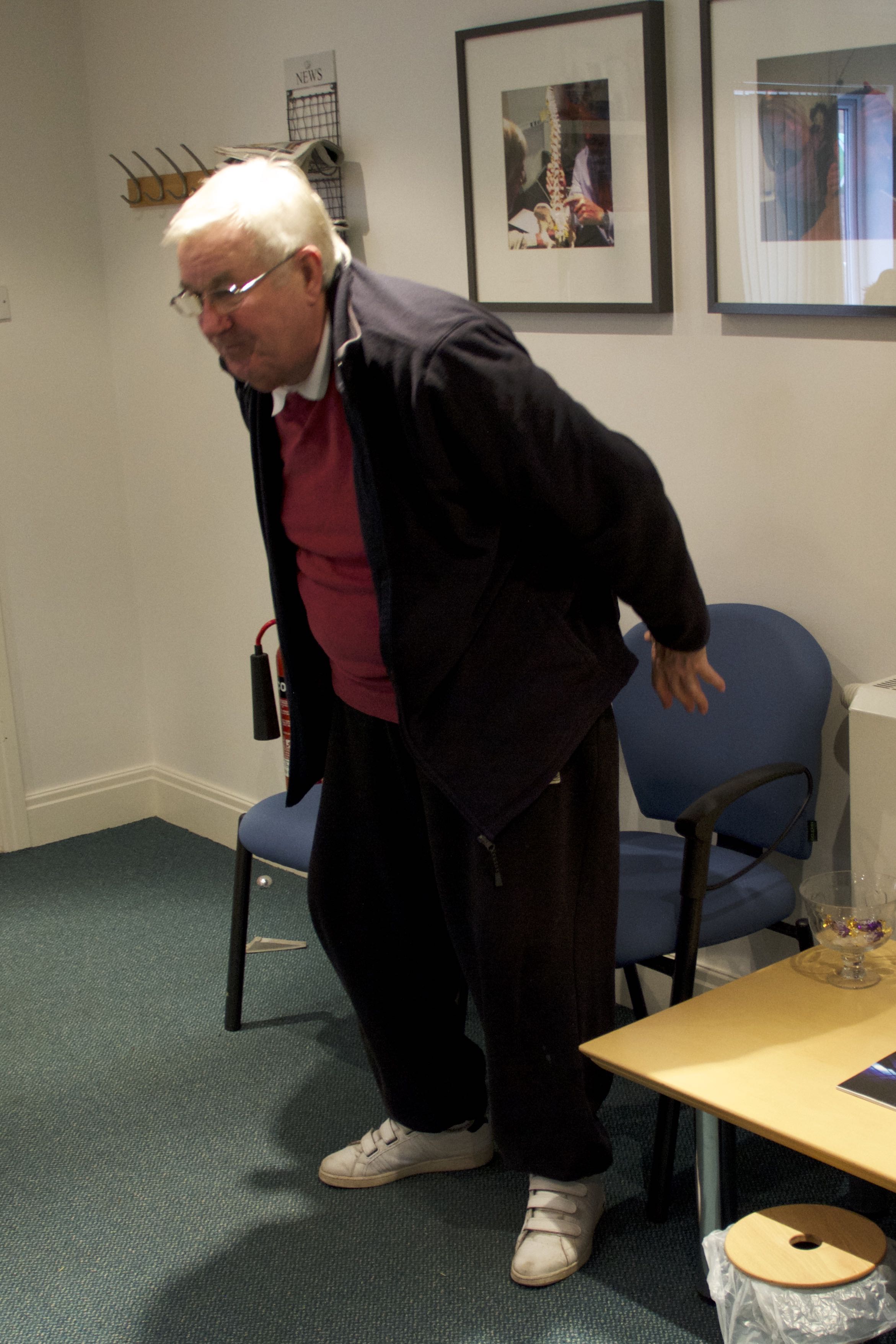
Most Low Back Pain is ‘Mechanical’, involving the muscles around the ‘facet joints’, the joints behind the disc that recruit muscular support to control the motion of the disc. Mechanical Low Back Pain will not show up on even the best available scans.
Mechanical Back Pain can be extremely painful, due to powerful compression of the facet joints by the muscles, giving sharp, sometimes disabling, back pain. In some cases it can give symptoms of a trapped nerve or deep referred pain to the buttock, hip, groin and leg.
Mechanical Back Pain causing a Trapped Nerve in the lower back, either sciatica or femoral neuralgia, irritates the outer (sensory) part of the nerve which transmits information mainly from the skin to the brain, this will cause well defined pain, numbness or pins and needles in the skin.
Mechanical Back Pain causing Deep Referred Pain occurs when an ‘interference signal’ from the back pain is picked up by the inner (motor) part of the nerve and sent to a muscle. The pain is felt under the skin usually in a muscle as a poorly defined dull numbness or bruised soreness. The pain uses the nerve to get around but the nerve itself is not trapped.
Disc Prolapse or Disc Herniation
In a small percentage of cases low back pain is due to a change in disc structure, when the soft inner part of the disc protrudes, a ‘herniation’ or ‘prolapse’, through the outer part. This may give some backache but the main pain is due to the entrapment of an adjacent nerve, here the referred leg pain caused by the Trapped Nerve is worse than the back pain. By far the most common is ‘Sciatica‘, irritation of nerve roots L5 or S1, less common is ‘Femoral Neuralgia’, irritation of nerve roots L2, L3 or L4. With this the symptoms are similar to other types of trapped nerves but there can be more irritation to the nerve with both the sensory changes as above (well defined pain, numbness or pins and needles in the skin) but also a failure of the reflex and weakness of the muscles supplied by the nerve as the nerve is more severely irritated.
Could my Back Pain be More Serious?
While serious illness is a rare cause of back pain, less than 1%, it does occur. Signs of serious illness are called ‘Red Flags’ and can come from who you are, your life, your medical history, your symptoms, what is found on examination and how you respond during treatment. In the field of back pain Red Flags are those pieces of information which suggest that the patient may not just have a mechanical back pain; it rarely has anything to do with the amount of pain, more pain does not mean more serious!
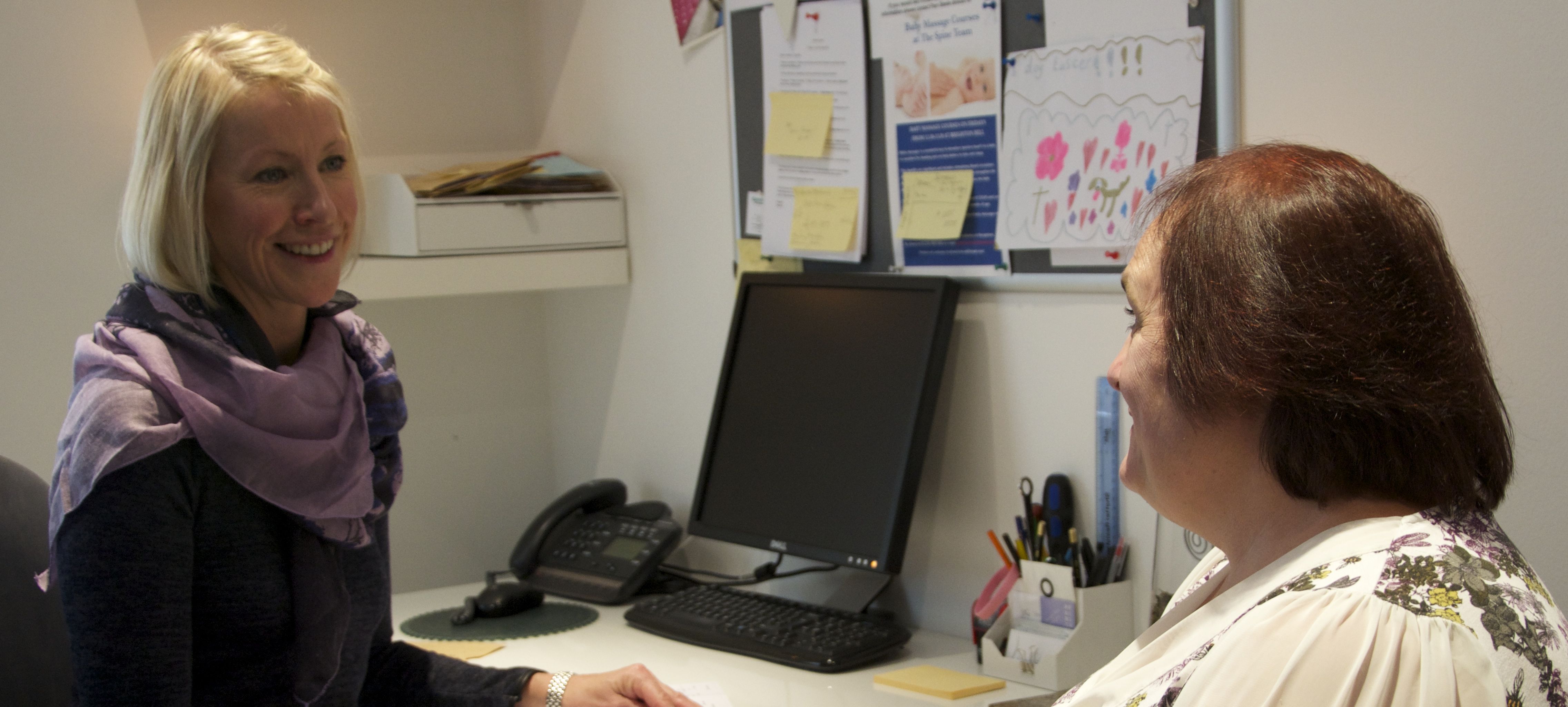 If there is any concern from the history then we will look for signs or symptoms that may indicate something needs to checked out before we can proceed. If there are any concerns regarding any aspect of your problem, including possible Red Flags, your Spine Team practitioner will discuss it with you in a straight forward way and, with your consent, communicate with your GP.
If there is any concern from the history then we will look for signs or symptoms that may indicate something needs to checked out before we can proceed. If there are any concerns regarding any aspect of your problem, including possible Red Flags, your Spine Team practitioner will discuss it with you in a straight forward way and, with your consent, communicate with your GP.
Red Flags are reasons to check and on their own are not a concern, a request for a blood test or imaging is a matter of us being thorough rather than a reason for you to worry.
The Spine Team Approach To Low Back Pain
The first step of the Spine Team approach is to identify those back pains that can be caused by serious illness or anatomical damage, both quite rare but important. Once this has been ruled out we look to your history of the problem and the examination findings to help understand where the problem is, what it feels like it does and what can be done about it, to achieve this we create a ‘Model’. A Back Pain Model is exactly as it sounds, it is a way of describing your problems and allows us to explain the problem to you in a way you can understand and test the effectiveness of our treatment.
At your first or second visit we will explain your problem using this Model in a way that you can understand. In Acute Low Back Pain the Model is likely to be quite simply Mechanical, what your back looks like, how it works and what has gone wrong. In Chronic or Recurrent Low Back Pain we have to consider why you have become vulnerable and the Model will include an understanding of either a weakness which has to be overcome or an environmental factor the needs to be controlled or eliminated. This of course is very individual and the explanation recognises you as a unique individual so it is very tailored to you.
Each time you come in we ‘test’ the Model by looking for signs that may suggest we should alter it, and therefore the alter the treatment or advice, until we have resolved the problem. Changes is lifestyle may be proposed as part of your Model but we always consider that good advice is advice that is taken rather than a set of unachievable ideals!

